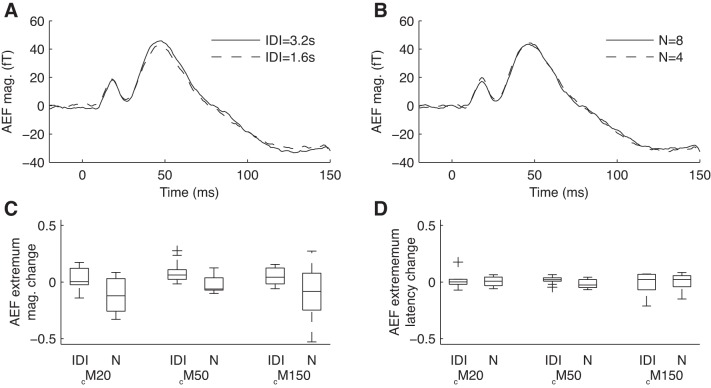Fig. 4.
Deviant AEF response shows no consistent dependence on either interdeviant interval (IDI) or length of preceding tone series (N). Deviants were separated by one of two IDIs (1.6 or 3.2 s) and one of two possible tone series lengths (N = 4 or 8). A and B: population grand averages of the deviant responses for the two different IDI (A) or N (B) conditions showed little difference. C: change in deviant response magnitude between IDI or N conditions for each of the three AEF extrema; more positive values signify a larger-magnitude AEF for 3.2-s IDI or N = 8 conditions, respectively. There were no significant changes in deviant extrema magnitudes between either IDI or N conditions across subjects (by Wilcoxon rank-sum test) nor in most individual subjects (see text). D: change in deviant response latency between IDI or N conditions for each of the three AEF extrema; more positive values signify a longer latency for 3.2-s IDI or N = 8 conditions, respectively. We observed no significant differences in extrema latency between any of the conditions for any extrema, either overall or in individual subjects.

